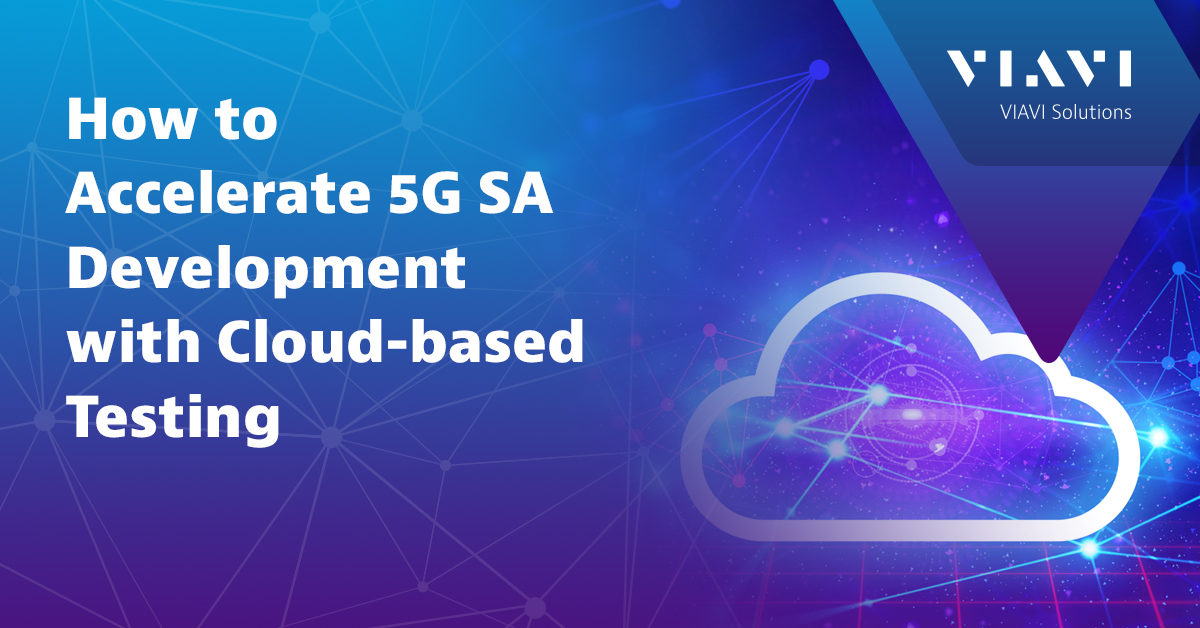How to Accelerate 5G SA Development with Cloud-based Testing

“We will be able to achieve new levels of operational automation, flexibility and adaptability.” This is how Verizon described the networks of the future. Or, to be more specific, this is how the company described its new cloud-native 5G core network, which it says will be launched in 2021.
The quote isn’t just a salesy over-statement. A number of major carriers are also planning to test and deploy standalone 5G core networks in the coming months. We’ll bet each and every one has similarly high expectations. 5G standalone (SA) networks (so-called because they run independently of 4G infrastructure) mark a major turning point in the evolution of the standard.
Cloud-native 5G core: the holy grail?
Why? For the first time and because 5G Core Network architecture elements can be placed closer to the end-user, greatly reducing latency, improving network reliability and delivering gigabit speed data services. 5G SA networks will transform business in numerous IoT verticals, with businesses able to develop and launch new
ultra-reliable low-latency (URLLC) and massive machine-type (mMTC) connectivity services. These include areas like remote telemedicine, driverless cars, and fully automated production lines in smart factories.
It’s also the holy grail for operators, who can optimize and monetize networks and begin to realise returns on hefty investment in 5G. Optimization will be possible because 5G SA enables more controlled allocation of network resources. This approach called network slicing, will allow operators to support the different performance requirements of multiple use cases, like URLLC, eMBB and mMTC.
As well as the network core going all-5G, the evolution to SA also means it’s going somewhere even more exciting: to the cloud. The new cloud-native 5G core is built using a service-based architecture (SBA). Each network function can be formed from small pieces of code which are connected via APIs. Functions can then be deployed across the network and scaled up and down as and when needed – all done virtually via software.
Keep things private or go public?
Operators and vendors are currently exploring how they can deploy the new cloud-native core for commercial networks. A major part of this decision-making is whether to deploy the 5G core in the private or public cloud, or to use a mixture of both. What would this look like? A 5G core could be built in the private cloud using dedicated commercial servers, which are then used to run cloud-native functions. When the virtual core on the private cloud exceeds capacity, excess traffic could then be offloaded to the public cloud.
Again, we’re not quite there yet! The industry is currently in the early network testing phase. As such, many operators will be partnering with public cloud providers in order to take advantage of these flexible environments to build and test their next-gen networks.
Testing the 5G core in this new cloud environment presents new challenges for operators and engineers. The cloud is great as it enables remote testing of components, but it therefore also requires a tool that multiple engineers can use from multiple dispersed locations. Engineers also need a controllable and repeatable environment, that has the openness and agility to support new 3GPP standards as and when they’re implemented.
Up in the clouds, ahead of the game: VIAVI and testing 5G SA in the cloud
VIAVI’s fully virtualized TeraVM solution allows testing to be carried out in the cloud, reducing the need for test hardware, freeing up the test engineers to run testing from remote locations, and increasing the flexibility to share test licences. It offers a controllable, repeatable test environment that can be accessed from anywhere with an internet connection.
TeraVM has for years been used by operators looking to quickly and easily test their networks. Now, we’ve made it available on cloud platform enabling operators to prepare and deploy the next generation of services. TeraVM is agnostic to the hypervisors and hardware platforms on which the public or private cloud platforms are deployed. As such, TeraVM RANtoCore can now run on AWS – and we’re currently supporting our customers to test their 5G RAN and core networks on AWS prior to launch.
Using TeraVM, operators can take advantage of an elastic test bed that can be scaled across multiple test locations. Engineers can access components remotely but manage and allocate resources centrally via a license server. The cloud has already helped reduce costs and drive efficiencies in other areas of a telco’s business, and now it’s going to do the same for network testing.
With years of experience testing in the cloud and the world’s first virtualized test solution, TeraVM is the ideal test partner for service providers as they look to test and develop 5G core networks, in both public and private cloud environments.



